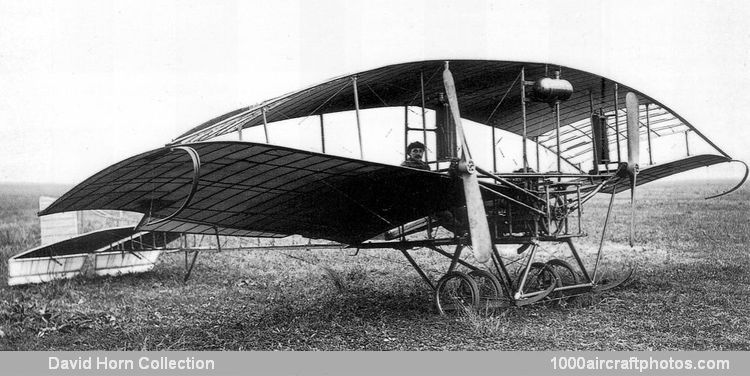03/31/2015. Remarks by Johan Visschedijk: "From 1910 to 1912 the American Jacques-Jules Sloan built his series of "bicurve" biplanes in a small workshop in the Paris suburb of Charenton. As with so many of the early designers and builders, it is difficult to determine how many of the machines appearing under his name were new ones, or merely earlier ones modified and developed.
His first was shown in 1910, typical of his bicurve designs with the shorter top wing arching down at the tips and attached to the lower wing just inboard of the tips of the lower wing. The extended leading and trailing edges of the upper wing joined those of the lower. The lower wing had some dihedral with drooping tips and large ailerons on the trailing edges near the ends. The long uncovered rectangular fuselage sat two in tandem behind the engine, a 50 hp Gnome with an 8 ft 2.4 in (2.5 m) diameter Sloan propeller.
A tall rectangular rudder stood up at the rear above a long tail plane set at a high angle on the fuselage. The elevators were connected to a forward elevator mounted on outriggers. The aeroplane rested in front on two pairs of wheels with a skid between each pair, and a tail wheel; the latter was replaced with a skid before the end of the year. The lower wings were called lifting surfaces and the upper ones stabilizing surfaces: the theory was that the downward curve of the lower wings would "slow the chute if the engine cut".
A similar machine, or the same one altered, was often photographed in flight. The forward elevator was gone, and a 35 hp Labor provided power through chains to the two tractor propellers. The pilot sat in a sort of bucket. Another version - or modification - flew next, with the Gnome and a single tractor propeller, front elevator, but with a less-drooping top wing. It crashed in 1911.
Sloan's penultimate reported flying machine was flying in 1912 at Issy, seemingly a throwback to the 1910 designs, with a similar twin skid; a final design was similar to the 1912 military aeroplane but with a small four-cylinder in-line engine."
